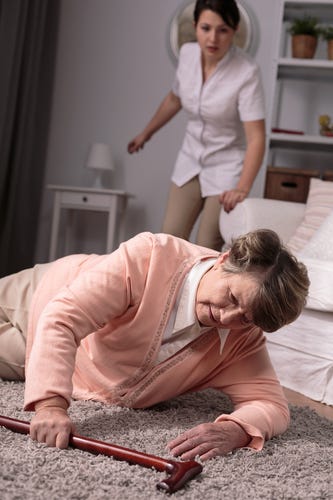
The small indicator clipped to my left ring finger flashed. The number on top, my O2, was at COPD levels, around 74. Below, my pulse was around 155.
I was about to fall over in a dead faint, so I flipped the switch back to full medical-grade oxygen and slowed down my pedaling.
And watched the numbers shift. Instantly my heart rate plummeted about 10, then 25 beats, then back to 72 in less than thirty seconds. My resting pulse is about 45. But I’d been sprinting hard at very low oxygen.
Above that, the 74 rocketed back up to 98, then 99, then 100% oxygenation in about 25 seconds.
Athletes know what I’m talking about. I’m measuring my lung capacity, my caridovascular system. How efficient it is. My recovery rate.
Not bad for an old broad at 66.
While VO2 testing is typically done for athletes in training as one way to get a baseline for how efficient their bodies are, what I’m doing is home-based. I have an adaptive oxygen machine hooked up to my bike trainer. Every morning I leap on it and do a series of sprints.
This isn’t anything particularly new. Lots of folks have been put on oxygen, as was my mother. However she, like far too many of us, shuffled around panting while tethered to a machine. Not what I’m referring to, and it’s precisely what I will never allow to happen.

Cardiovascular disease is the number one killer of both men and women in the United States. As we age, our lung capacity decreases gradually after about 20–25. There is a lot you and I can do to slow this way down, and it always and forever involves movement. Activity. Asking our lungs to expand to full capacity as often as we can. Learning to breathe deeply.
When we exercise, we also place demands on our hearts. That increases circulation, which delivers nutrients and oxygen throughout the body. The more efficient the heart, the better the nutrient deliver. I am vastly oversimplifying this, but you get the drift.
I ended up with this system in my basement (LiveO2.com) after I started using one at my sports chiropractor’s office a few years back. He and I were searching for solutions to the burgeoning symptoms of post-concussion syndrome, which many NFL players suffer. At the time, I’d just had my 16th. I’ve had five more since. It’s a sad fact that once we’ve cracked the coconut, it seems to attract even more injuries. With each successive blow, the symptoms get worse.
For some, it only takes one bad hit to do permanent damage, as this article expresses. Apparently either I have one hell of a hard head (to which all my friends will happily attest), or a very resilient brain, or my constant, lifetime exercise habits have helped a whole lot. Still it wasn’t enough.

After three days doing sprints on the exercise bike, I began to notice that I was writing in full sentences again. As a prize-winning author and journalist, the head bangs had begun to cost me cognitive functions. The worst was and still is the completely unpredictable emotional outbursts (see Concussion, with Will Smith, /and that is a snapshot of episodes of my life. It is hardly limited to NFL athletes).
My sense of humor returned. Not only that, the regular, intense blasts of oxygen seemed to have much improved several aspects of brain function that I hadn’t planned on. My writing got a whole lot better. Unfortunately, to the hilarity of both my chiro and myself, my farts got so bad that I wilted every single silk plant in the house. It is a statement of their foulness that I can turn every single fake leaf yellow. That, and even I got out of the car when I farted. While still driving.

Happily, that side effect dissipated (along with all the bird life within a three- mile radius of my home).
The other side effect was that this helped me train for high-altitude climbs. And, when I have injured myself, I heal even faster.
Let’s be clear. I might posit that were I living at sea level and not in Denver) some of these results might also be available just by using the Wim Hof method. I’ve tried that and not gotten the benefits promised. Besides, I am not a fan of dunking myself in glacier waters.

One of the keys to the process I use is that when I sprint on my bike, I adapt the oxygen to add 14,000' to my current altitude. That means I am sprinting full speed for 30+ seconds on top of Kilimanjaro.
Having been there, I can attest, ain’t much air up there. So when you are sprinting, you are forcing your lungs and body to work at extreme deficits. Then when I flip the switch back, my body (and cells, all of them) are awash with medical-grade oxygen. By that point, they’re pretty hungry for it. It’s a good thing the switch is easy to reach or I would simply tip over and quietly expire, to be found by my annoying northern neighbor, who would be banging on my front door to bitch about the smell.

For older folks, which is a large portion of who I saw at my chiropractor’s office making use of this system, it’s a huge help to get more oxygen in the body. A sedentary lifestyle ages us fast, and without regular movement, our lungs shrink and our hearts lose their capacity to do the constant work they are so beautifully designed to do.
Most of those folks were pedaling very slowly, which was all they could manage. We begin where we are. This isn’t about breaking records. It’s about braking the speed of our decline.

For those of us struggling with injuries, or who are training (and my hand is up for both here), an oxygenation system is a boon. When I use this every day I notice the difference. After a month overseas, and most especially if I have banged my noggin again, the symptoms tend to return. That’s why I invested in one. This is a system for life, for me. Because after one session on the bike, the symptoms dissipate. That’s a gift of untold proportions, for those of us dealing with multiple concussions. Or, for that matter, the aging process itself. Or both.
Now look. Will this make my crepey skin go away? No. Will this give me the body of a fitness model? OH PLEASE. Will this do wonders for my weight? Kindly. To that, yes, if I put in one of the movies I have downstairs and spend one hell of a lot more time on my bike, maybe.
But let’s be realistic. At 66, while I am a serious athlete and bodybuilder, my primary concern is overall health. Flexibility. Strength. And let’s talk about that strength piece. About fifteen minutes ago, I schlepped about 17 boxes full of books out to my basement gear room, which is now a staging area for an upcoming move. Those boxes ranged in weight from about 40 to over 60 pounds. I love that kind of physical labor.
Even two weeks ago, after a long battle with rotator cuff surgery and then a ruptured bicep tendon, that would have been impossible. The combination of hard work at my gym, regular oxygenation (which helps healing) and dedicated daily pushups are giving me my arms back. This is functional strength, not “my biceps are bigger than yours” strength. It has to serve a purpose. I like being strong because it serves my sports, my life, and my options. For example, if I fell and cranked my ankle, or even broke a leg, I sure as hell could pull myself up. That’s why I have pullup bars across two doorways in my house. Functional. And in some cases it has been lifesaving.
You can find similar oxygen systems online or at various health care offices. Others may not offer the adaptive phase, which is the piece that does the most good for me. My acupuncturist has a system in her office as well. My system runs about four grand, others are much less expensive. I set it up with my own bike. It was simple to put together.
And it’s how I start every single morning that I am in my own house. Thirty minutes or so of sprinting to terrific music, breathing in sweet oxygen after a good hard sprint or three, and watching my numbers show that my lungs and heart are working at top capacity.

Once you and I breeze past our mid-twenties, the body signals that it’s time to start declining. Nature has designed us to mate, procreate and be at our physical best right about then. However, you and I can do a great deal to push our bodies, gently and firmly, to retain a great deal of health and power long into our much later years. While it helps- and kindly, I can attest- to not whack your noggin repeatedly as I have done, finding ways to get more oxygen into your body is a big help.
And for those of you who are serious endurance athletes, I can’t even begin to make the argument about how much this kind of training supports your performance. When I climbed Mt. Kenya (17K’) last November, it was a breeze. That’s saying something at 65. At any age for that matter.

For the rest of us, especially as we age, being aware that when our elders take a fall, too many docs don’t treat the head. When our folks decline rapidly, I might posit that this could well be because of a TBI, from smacking their noggin on the bathroom sink on the way down. Combine this with polypharmacy, and the results can be disastrous. Even more reason to keep us moving, which helps a great deal with overall health.
Some 5.3 million Americans of all ages live with the consequences of TBI. I’m one of them. Pushing oxygen hard into my body helps. Whether that works for you, I have no clue. It sure helps the body work more efficiently, and if nothing else, to my mind, that helps me deal with not only the insults of aging but also those that I continue to visit on myself through my sports.
Knowing your A1C, your blood pressure, a variety of markers for whatever you and I may be dealing with are all important. However, the older we get, the more important it is to understand your cardiovascular capacity. You don’t need to be an athlete to want to know that. All of us should, if for no other reason than it’s a marker for heading off lifestyle diseases.
Here’s where you can go find out for free. From there you will know what to do. Whatever it is, try not to bang your noggin.
Comments powered by Talkyard.